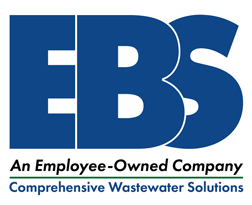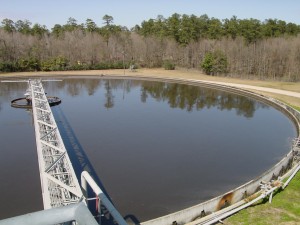Primary clarification is the physical treatment process of removing solids before biological treatment. It is the most cost effective way to remove these solids after basic screening. Process water enters the clarifier tank and floatable solids (scum) are removed from the surface by skimmers while settleable solids (sludge) are collected on the bottom by a rake and removed via a sludge removal system. Effluent destined for biological treatment leaves the clarifier over a weir. The expected range for percent removal in a primary clarifier is 90%-95% settleable solids, 40%-60% suspended solids, and 25%-50% total BOD5.
Clarifier efficiency is based on hydraulic detention time, temperature of the water, the design of the tank and the condition of the equipment. Poor clarifier performance can be due to a variety of factors such as (1) hydraulic overload which decreases hydraulic detention time; (2) hydraulic under-load which doesn’t allow the equipment to work efficiently; (3) sludge buildup which causes decreased tank volume; and (4) highly concentrated waste streams. Bypassing a clarifier, which means routing plant effluent directly to secondary treatment in an aeration basin, should be done only in emergencies when clarifier equipment must be repaired or the sludge removal system is not able to process the sludge volume it receives. This scenario introduces high solids and elevated BOD levels into the biological treatment system and is not advised.
Pound for pound a primary clarifier can potentially remove more BOD than a biological system. Specifically in a paper mill, primary clarifier performance is critical to remove fiber from the mill effluent. Fiber that enters an ASB system will often show up as “phantom” BOD or slowly degrading BOD that does not show up in a traditional 5-day BOD test. This BOD shows up later and results in loading and oxygen demand in the system that cannot be monitored or predicted. Optimizing primary clarifier performance, and ensuring continuous performance, will ensure overall wastewater treatment plant performance is optimized.

